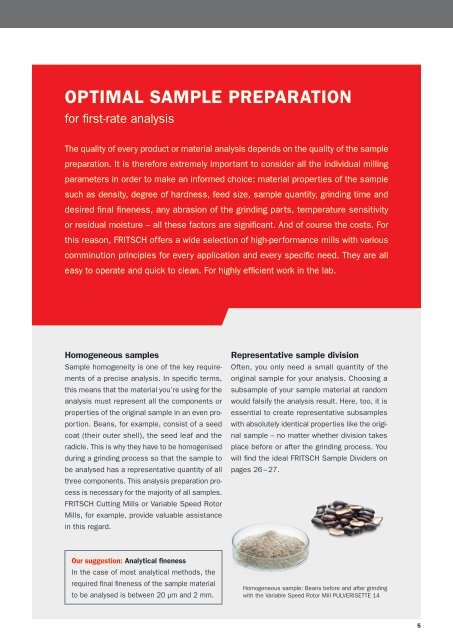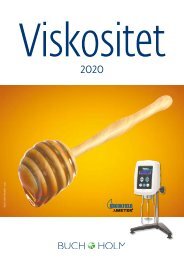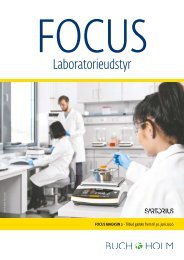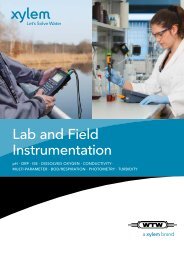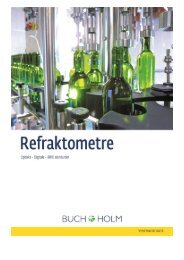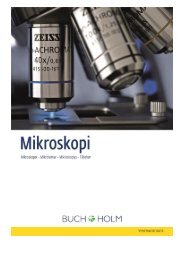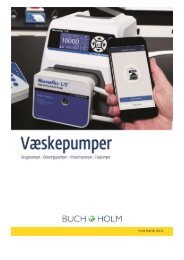BuchHolm-Fritsch-katalog-prøveforberedelse
You also want an ePaper? Increase the reach of your titles
YUMPU automatically turns print PDFs into web optimized ePapers that Google loves.
OPTIMAL SAMPLE PREPARATION<br />
for first-rate analysis<br />
The quality of every product or material analysis depends on the quality of the sample<br />
preparation. It is therefore extremely important to consider all the individual milling<br />
parameters in order to make an informed choice: material properties of the sample<br />
such as density, degree of hardness, feed size, sample quantity, grinding time and<br />
desired final fineness, any abrasion of the grinding parts, temperature sensitivity<br />
or residual moisture – all these factors are significant. And of course the costs. For<br />
this reason, FRITSCH offers a wide selection of high-performance mills with various<br />
comminution principles for every application and every specific need. They are all<br />
easy to operate and quick to clean. For highly efficient work in the lab.<br />
Homogeneous samples<br />
Sample homogeneity is one of the key requirements<br />
of a precise analysis. In specific terms,<br />
this means that the material you’re using for the<br />
analysis must represent all the components or<br />
properties of the original sample in an even proportion.<br />
Beans, for example, consist of a seed<br />
coat (their outer shell), the seed leaf and the<br />
radicle. This is why they have to be homogenised<br />
during a grinding process so that the sample to<br />
be analysed has a representative quantity of all<br />
three components. This analysis preparation process<br />
is necessary for the majority of all samples.<br />
FRITSCH Cutting Mills or Variable Speed Rotor<br />
Mills, for example, provide valuable assistance<br />
in this regard.<br />
Representative sample division<br />
Often, you only need a small quantity of the<br />
original sample for your analysis. Choosing a<br />
subsample of your sample material at random<br />
would falsify the analysis result. Here, too, it is<br />
essential to create representative subsamples<br />
with absolutely identical properties like the original<br />
sample – no matter whether division takes<br />
place before or after the grinding process. You<br />
will find the ideal FRITSCH Sample Dividers on<br />
pages 26 – 27.<br />
Our suggestion: Analytical fineness<br />
In the case of most analytical methods, the<br />
required final fineness of the sample material<br />
to be analysed is between 20 μm and 2 mm.<br />
Homogeneous sample: Beans before and after grinding<br />
with the Variable Speed Rotor Mill PULVERISETTE 14<br />
5


